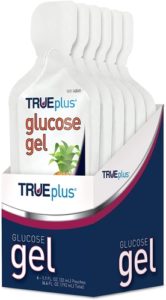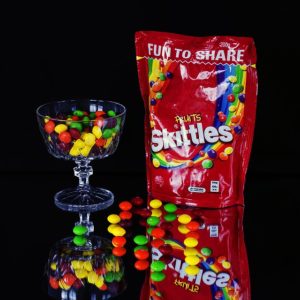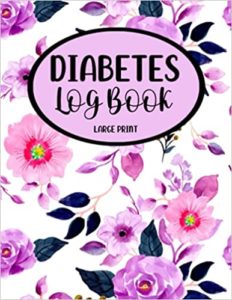Maintaining your blood glucose levels within the target range can help delay or prevent serious health complications. Although this is very important, close management of blood glucose levels can also increase your risk for hypoglycemia.
Levels below 70 mg/dL are considered low. In case you suspect your blood sugar level is low, be sure to check it and treat it.
If left unresolved, low blood glucose can be very dangerous. Therefore, it’s important for people with diabetes as well as their caregivers to know how to treat it quickly and properly.
You are at a higher risk of having low blood sugar reactions if you:
- Delay or skip a snack or meal
- Exercise
- Consume alcohol without eating carbs
- Eat too few carbs or administer too much insulin
Check your blood sugar level if you experience any of the following symptoms:
- Sweating
- Fatigue and/or weakness
- Anxiety
- Headache
- Increased heartbeat
- Shaking
- Dizziness
Follow the 15-15 rule
If your blood sugar level is between 55 and 69 mg/dL, you can raise it using the 15-15 rule.
Have 15 grams of carbohydrates and check it after 15 minutes.
If your blood sugar is still not within your target range, repeat this procedure until it’s within the target range. After raising it to your target level, eat a snack or nutritious meal to prevent it from getting too low again.
Items that have 15 grams of carbohydrates include:
- ½ cup (4 ounces) of regular soda or juice (apple, orange, pineapple, grape, prune, or cranberry juice).
- 1 tsp of syrup, honey, or sugar.
- Gumdrops, jellybeans, hard candies (check the food label for the amount you should eat).
- 1 dose (1 tube) of glucose gel (follow instructions).
- 3-4 glucose tablets.
- 12 gummy bears
- 6 large jelly beans
- 15 skittles
- 4 starburst
- 5 small gumdrops
- 1 tube glucose gel
- 3-4 glucose tablets
- 5 lifesavers
- 1 tsp sugar in water
- 1 cup fat-free milk
- 1 small orange
- 15 grapes
- 1 small apple
- ½ banana
- ½ cup applesauce
- 2 tsp of raisins
Note: The foods listed above are easily absorbed and will raise blood sugar levels quickly. Foods that contain protein or fat – such as chocolate, candy bars, ice cream, cookies, crackers, and bread – don’t raise blood sugar quickly enough.
Tips you should keep in mind
- Young kids usually require less than 15 grams of carbohydrates, especially toddlers and infants. Your doctor can provide guidance on how much carbs your child needs.
- Avoid eating carbs rich in fiber, such as lentils or beans, or carbs that have fat. Fat and fiber slow down the absorption of sugar.
- Raising your blood sugar takes time. Allow some time for the 15-15 treatment to work.
- When the risk of lows is high, check your blood sugar more often. The risk of lows is higher when you travel or when the weather is hotter.
How do you treat severely low blood sugar?

Therefore, it’s important to ensure that your caregivers, friends, and family know the signs of severely low blood sugar so they can help with treatment if needed.
One of the best ways of treating severely low blood sugar is using glucagon. However, a glucagon kit requires a prescription. Consult your healthcare provider to see if you need a kit and learn when and how to use it. Inform those close to you (friends and family members) where you keep the kit and train them on how to use it.
Contact your healthcare provider for emergency treatment after administering a glucagon injection. In case the person passes out (faints) due to extremely low blood sugar, they typically wake up 10-15 minutes after the injection. Administer one more dose if they don’t wake up 15 minutes after the glucagon injection.
Once they wake up and are able to swallow:
- Feed them fast-acting sources of sugar (fruit juice or regular soft drink).
- Have them eat long-acting sources of sugar (a sandwich with meat, cheese, and crackers).
It is important that people you are around often (family, friends, teachers, co-workers, and coaches) know how to test blood sugar and treat low blood sugar as well as severely low blood sugar. Medical IDs such as necklaces and bracelets can be critical in keeping diabetes patients healthy and safe. Emergency medical responders are usually trained to look for medical IDs when caring for people who are unable to speak for themselves.
When should you call 911?
Your helper, relative, or friend should call 911 if:
- You’ve passed out and a glucagon kit is not available.
- You had a glucagon injection but are still feeling confused.
- You’ve had the first dose of glucagon but have not woken up after 15 minutes
- Your blood sugar is still low 15-20 minutes after administering treatment or does not respond to the usual treatment
After treating low blood sugar
If you had mild low blood sugar (55-69 mg/dL), you can resume your normal activities after successful treatment. Be sure to confirm whether your blood sugar is in your target range.
Early signs of low blood sugar may go unnoticed for 48 to 72 hours. Check your blood sugar level more often to ensure it’s within your target range, especially before physical activity, driving a car, or eating.
If you administered glucagon injection to treat severe low blood sugar (below 54 mg/dL), call your doctor immediately for emergency treatment. Moreover, if you have had several lows close together (whether severe or not), be sure to notify your doctor. They may recommend changing your diabetes treatment plan.
 Keep an accurate record of your numbers
Keep an accurate record of your numbers
If low blood sugars continue to occur, be sure to share your insulin, blood sugar, food, and physical activity logs with your healthcare provider.
They will look for patterns and may be able to prevent lows by changing the amount and timing of your meals, physical activity, and insulin.



